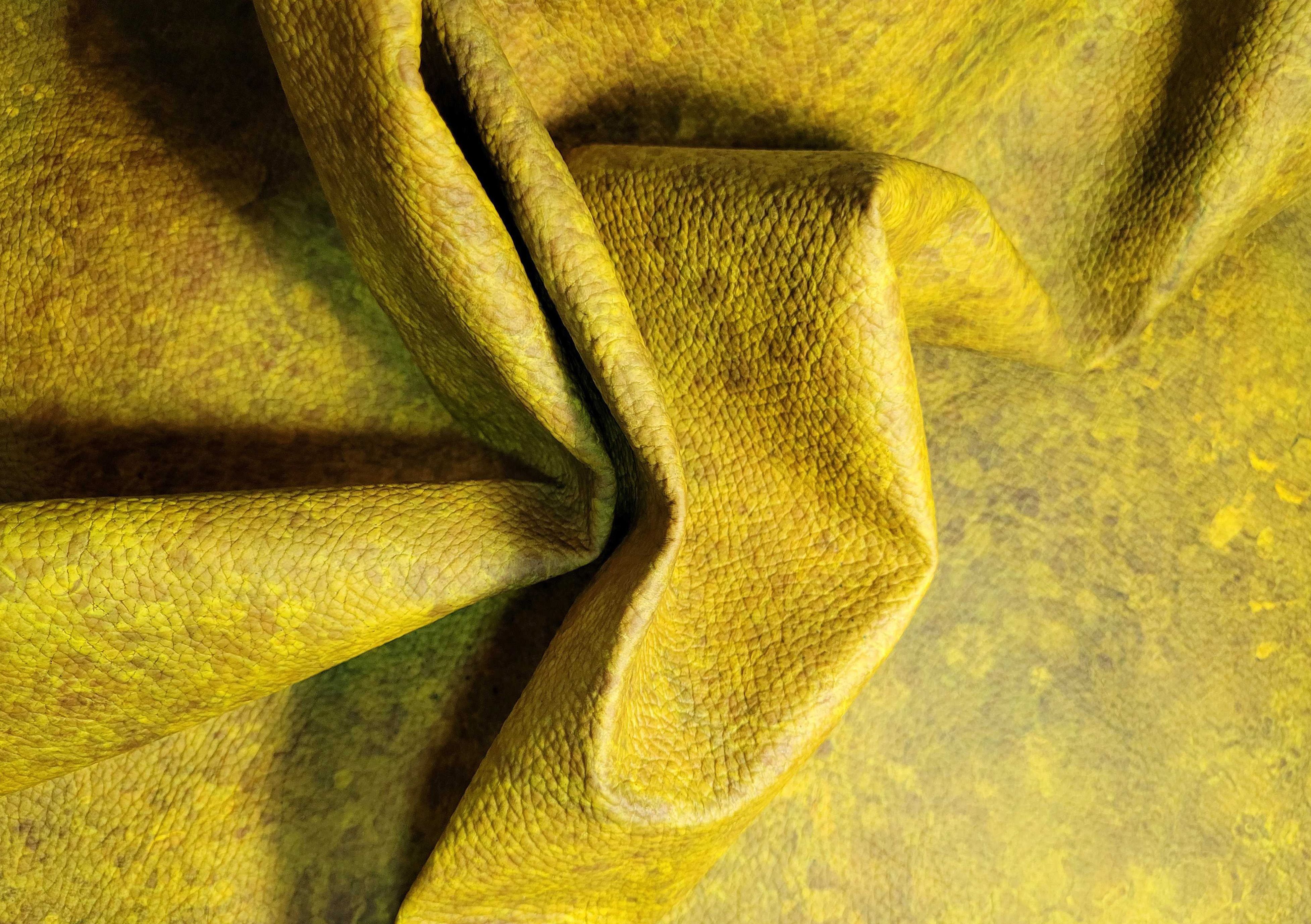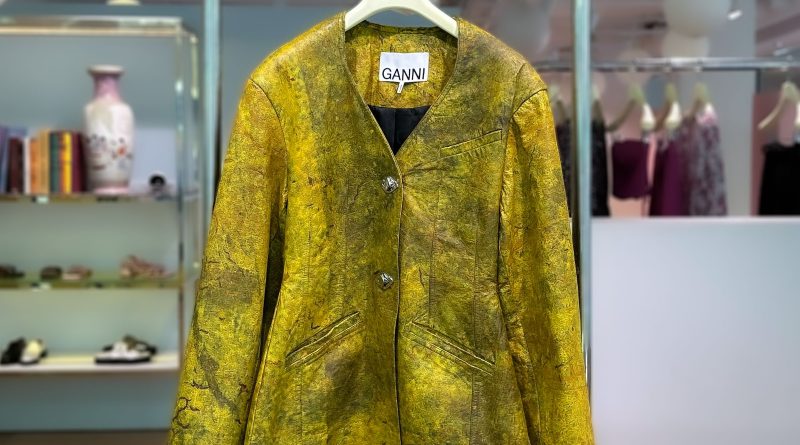Faux-Leather Jacket Made of Bacteria
Tiya Antony
Fashion News Editor
The Danish fashion brand, Ganni, and the Polybion materials company created the first ever use of bacterial cellulose as an alternative for leather. The jacket debuted at the Global Fashion Summit in 2023. Throughout the past years, there have been growing research efforts to create leather alternatives that have similar properties to leather but are more sustainable.

The bacteria were fed fruit waste mostly from mango, to convert the sugar into cellulose. The waste collected from the agricultural industry was used in the bacteria’s natural digestive process in order to take advantage of the cellulose. Polybion is based in Mexico, so the fruit waste can be abundantly found and used because otherwise it would be in landfills creating greenhouse gases. Then, the cellulose membrane is harvested and tanned, in a similar way to cowhide. Finally, there are some finishing procedures and quality checks. The final Ganni and Polybion product is the yellow outwear piece with added silver buttons for decoration. The leather falls in between the textural feeling of leather and plastic, creating a new unique feel. Hence, the prototype emphasizes that new materials can be successfully used in fashion pieces. This bacterial cellulose is also being researched to be used for lamps, cosmetic packaging, and more.
Axel Gomez-Ortigoza, the co-founder of Polybion, states that working with Ganni is “the first showcase of a product by a global brand” to promote the ideas of sustainability and experimenting with leather alternatives. This material of bacterial cellulose has been termed Celium by Polybion.

Fashion brands other than Ganni, such as Adidas and Hermes, have been experimenting with mycelium leather, grown from fungi. Polybion states that Celium leather requires fewer natural resources and has a lower carbon footprint than mycelium leather. One continuing problem is that Celium relies on petroleum-based plastics for coating. Hence, the discarding of the product can still cause effects on the environment. Although there are many questions still unanswered about leather alternatives and problems to overcome, this breakthrough opens huge opportunities for the fashion industry. The expanding fashion industry joins hands with science and material companies, in order to promote sustainable fashion to better protect the planet.
Ganni hopes to sell garments made from Celium starting in late 2024. Ganni is a trailblazer in trying to reduce carbon and working with new fabrics instead. Fashion companies standing with biomaterial research and companies allows for a proactive approach to the climate crisis and the exploration of being sustainable.
Contact Tiya at antonyti@shu.edu

